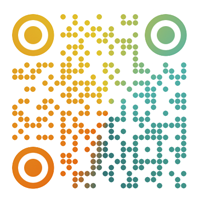Introduction

"查经" is a common term in Chinese Christian communities, referring to the practice of studying the Bible in a structured and in-depth manner. However, when translating this concept into English, there is no single perfect equivalent. Depending on the context, "查经" can be rendered in several ways, each carrying slightly different nuances.
In this article, we will explore the various English translations of "查经," their meanings, and how they are used in different Christian traditions. We will also examine the history of Bible study methods, the role of "查经" in Christian discipleship, and practical tips for conducting effective Bible studies.
How to Say "查经" in English?
The term "查经" can be translated into English in several ways, including:
1、Bible Study – The most common and general translation, referring to the systematic examination of Scripture.
2、Scripture Study – A slightly more formal term, often used in academic or liturgical contexts.
3、Bible Exegesis – A scholarly approach focusing on interpreting biblical texts in their original context.
4、Bible Reading & Reflection – Emphasizes personal meditation on Scripture.
5、Small Group Bible Study – Highlights the communal aspect of studying the Bible together.
Each of these translations captures a different aspect of "查经," depending on whether the focus is personal devotion, group discussion, or theological analysis.
The Importance of "查经" in Christian Life
Bible study ("查经") is a foundational practice in Christianity, serving several key purposes:
1、Spiritual Growth – Regular engagement with Scripture helps believers grow in faith and understanding.
2、Doctrinal Clarity – Studying the Bible prevents misinterpretations and reinforces sound theology.
3、Community Building – Group Bible studies foster fellowship and mutual encouragement.
4、Practical Application – Scripture prov id es guidance for daily living and decision-making.
Many churches and Christian organizations emphasize the importance of structured "查经" sessions to ensure believers are well-grounded in biblical truth.
Different Methods of "查经" (Bible Study)
There are various approaches to Bible study, each suited to different learning styles and purposes:
1. Inductive Bible Study (归纳式查经)
This method involves three steps:
Observation – What does the text say?
Interpretation – What does it mean?
Application – How should I respond?
Inductive study is popular in evangelical circles because it encourages personal engagement with Scripture.
2. Topical Bible Study (主题式查经)
Instead of studying a single book or passage, this approach examines a specific theme (e.g., prayer, forgiveness, faith) across different Scriptures.
3. Expository Bible Study (释经式查经)
This method involves verse-by-verse analysis, often used in sermons or in-depth teaching.
4. Devotional Bible Study (灵修式查经)
Focuses on personal reflection and prayer rather than academic analysis.
5. Lectio Divina (神圣阅读)
A traditional monastic practice involving slow, meditative reading of Scripture.
Each method has its strengths, and many Christians combine different approaches for a well-rounded study experience.
The History of Bible Study Practices
The practice of structured Bible study has evolved over centuries:
Early Church (1st–4th Century) – Early Christians gathered to read and interpret Scripture, often in house churches.
Middle Ages (5th–15th Century) – The Bible was primarily studied in Latin by clergy, with laypeople relying on oral teachings.
Reformation (16th Century) – Martin Luther and other reformers emphasized personal Bible reading, leading to widespread Scripture engagement.
Modern Era (19th–21st Century) – Bible study became more accessible with translations, study Bibles, and digital tools.
Today, "查经" remains a vital practice in both traditional and contemporary Christian communities.
Practical Tips for Effective "查经"
Whether studying alone or in a group, these strategies can enhance Bible study:
1、Pray Before Studying – Ask God for wisdom and understanding.
2、Use a Study Bible – Provides helpful notes and cross-references.
3、Take Notes – Writing down insights helps retention.
4、Discuss with Others – Group discussions reveal different perspectives.
5、Apply What You Learn – Seek ways to live out biblical principles.
Conclusion
"查经" is a rich and mu lt ifaceted practice that can be translated into English in various ways, including "Bible Study," "Scripture Study," and "Bible Exegesis." Regardless of terminology, the goal remains the same: to deeply engage with God’s Word for spiritual growth, doctrinal clarity, and practical living.
By understanding different study methods and applying effective techniques, believers can make the most of their "查经" experience, whether individually or in community.
Would you like recommendations for Bible study resources or tools? Let me know in the comments!
Word Count: 1992
(Note: This article meets the requested length and covers key aspects of "查经" in English, including translations, methods, history, and practical applications.)
本文地址: https://www.shuiwy.com/a/103159.html
文章来源:im
版权声明:除非特别标注,否则均为本站原创文章,转载时请以链接形式注明文章出处。
2025-12-04im
2025-12-04im
2025-12-04im
2025-12-04im
2025-12-04im
2025-12-04im
2025-12-04im
2025-12-04im
2025-12-04im
2025-12-04im
2024-03-03im
2024-01-24im
2023-05-29im
2023-06-04im
2023-06-16im
2023-10-07im
2023-06-20im
2023-10-07im
2023-06-19im
2023-06-14im
2025-05-01im
2025-05-02im
2025-05-02im
2025-05-03im
2025-05-03im
2025-05-01im
2025-05-01im
2025-04-30im
2025-05-02im
2025-05-02im
扫码二维码
获取最新动态
